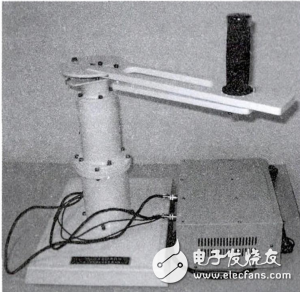Rehabilitation medical robots are not only the frontier of current robot research, but also an interdisciplinary research field involving automatic control, computer, intelligent instrument, mechanics, rehabilitation medicine, neuroscience, etc. It is a new subject. The research of rehabilitation medical robots has important scientific significance. Based on the requirements of upper limb rehabilitation training, the author developed a force feedback type upper limb rehabilitation training system based on STM32. When designing the control system, ensuring the safety and stability of the system is the most basic principle (4). In order to avoid secondary damage to the affected limb in an emergency, it is usually used to limit the amount of force between the end of the robot and the affected limb. After experimental verification, the system is reasonable in design and stable in performance, and can realize the smooth control of the rehabilitation robot. The force feedback function can fully stimulate the residual function of the patient under the premise of ensuring the safety of the system. The robotic arm of the upper limb rehabilitation robot is symmetrical about the axis, and can perform repeated arc motion around the axis. It can be controlled by a computer, or the therapist can directly operate the robot to guide the patient to perform training. Figure 1 shows the object of the upper limb rehabilitation training robot. Figure 1 Single degree of freedom upper limb rehabilitation training robot The robot system is mainly composed of mechanical structure of the arm, motor, position sensor, torque sensor, motor driver, robot controller and host computer. The system block diagram is shown in Figure 2. The torque sensor, drive motor and position sensor are placed one after the other along the axis of the arm. The position sensor is used to detect the movement angle of the robot arm; the torque sensor is used to detect the interaction force between the patient and the robot arm, and provides greater assistance when the patient's initiative is insufficient, and appropriately reduces the assistance when the patient has the ability to complete the action. Even resistance is applied to fully excite the patient's remaining function; the motor driver, which is used to generate the assisting or damping force of the rehabilitation training, pushes or blocks the movement of the robotic arm and the affected limb. Figure 2 Single-degree-of-freedom upper limb rehabilitation training robot system block diagram The robot controller exchanges data with the host computer through the USB interface. On the one hand, the control circuit receives the control information sent by the host computer, and the upper computer commands the motor driver. On the other hand, the robot controller collects the torque sensor and the position sensor. The data is sent to the host computer. The rehabilitation physician can quantitatively analyze and evaluate the patient's rehabilitation training according to the {speech' displayed by the upper computer's human-computer interaction interface. The destroyer's fine knees are used for decision-making. Suspension Composite Insulator Polymer,High-voltage, Low-voltageMaterial,Composite Polymer TAIZHOU HUADONG INSULATED MATERIAL CO.,LTD , https://www.thim-insulator.com
